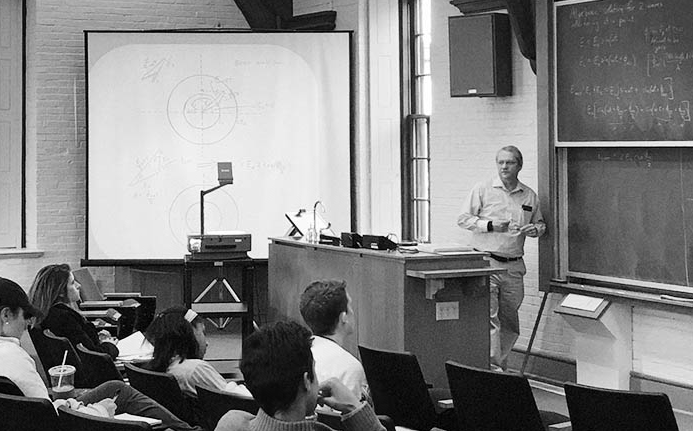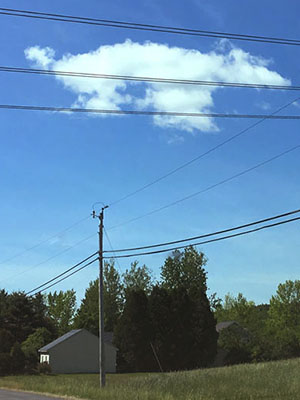Generative-Adversarial AI face generation.


A secret message is embedded in this image of Dale Syphers giving a PHYS1140 lecture. The message survives even if the image is cropped, resized, or manipulated. Hint: the message is embedded in frequency space, not in the spatial domain. To see the message and how it was embedded, click on the picture.



A "pendulum wave". The apparatus consists of 12 large nuts (13 if you count me), string, dots that fluoresce and some longwave UV lamps. I want each pendulum's angular frequency to be offset from its neighbor by a fixed amount. This is achieved by proportionally changing the length of each successive pendulum:

Consider just two pendula, say #1 and #2. Their phase difference advances linearly with time. #3’s phase difference advances relative to #2 by the same amount per unit time and so on. Initially, the phase difference is small (and evenly distributed) across all the pendula, so you see part of a sinusoid with a long wavelength. As time goes on, the per-pendulum phase difference increases. This of course contracts the wavelength.
Further on in time, the wavelength gets so small that aliasing happens (essentially a signal sampling/Nyquist effect). For example, when the phase difference gets close to ~pi radians, the pendula alternate between something close to +max and -max displacement. In that case, we see two waves intersecting each other. Other aliasing patterns happen too. By symmetry, the pattern advances to pi radians phase offset per pendulum, then works its way backwards with time (the ‘snake’ goes the other way for example).
The Great American Eclipse of 2017, viewed on the Bowdoin quad.
The eclipse only offered partial coverage due Bowdoin's location in Brunswick Maine. Small gaps in the leaf canopy act like pinole lenses, creating images of the crescent sun.
